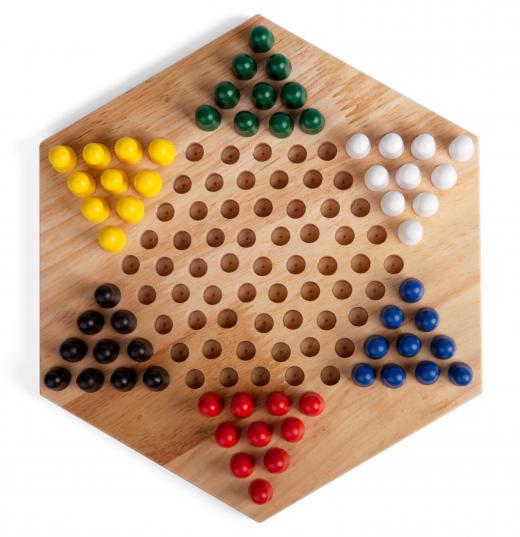People throughout the world have relied on marbles as a form of amusement for centuries. The majority of these marbles are made of glass, clay, or agate materials, though wooden marbles can also be found in limited supply. These wooden models were often made at home, and served as a low-cost alternative to store-bought models made from more traditional materials. Wooden marbles are also used in packaged games and toys, and may have found their way into the collections of some marble enthusiasts.
Traditional marble games involve using the hands or feet to propel the marbles into a target area on the ground. In one popular version, players draw a circle on the ground, then use marbles to push other player's pieces out of the circle. This low-cost game likely dates back several hundred years, though it is most commonly associated with the early 20th century, when marbles enjoyed a peak in popularity. Marbles may also be used in regional variations of this game, including games where the player aims the marble at a hole or target.

Wooden marbles were rarely used in these types of games, and were likely used only when players couldn't afford heavier glass or clay units. Wood is less dense and much more lightweight than these glass products, resulting in very light marbles. This means that the wooden marbles were unlikely to push other player's marbles out of a circle. It also made it more difficult for players to launch the marble with sufficient force to reach a target.

These wooden marbles were much more commonly found in games and toys. They were used in wooden marble shooters, where the wooden marbles would cause less damage or injury than a glass unit. They also play a role in rolling towers games, or even board games like Chinese checkers. Wooden marbles often come in a wider range of sizes than traditional marbles because they were used in different types of applications. Handmade versions may consist of simple scrap wood, while manufacturers use both hard and soft woods, depending on how the marbles would be used.

Many older marbles are highly valued among collectors. While wooden marbles are not necessarily valuable, some can be collectible, depending on features. Pairs, or twins, of marbles made from any material are very valuable due to their scarcity. Many marble players played for keeps, which meant that pairs of marbles were often separated. Very large wooden marbles, those with intricate designs, or units still in their original packaging may also be of interest to collectors.
